|

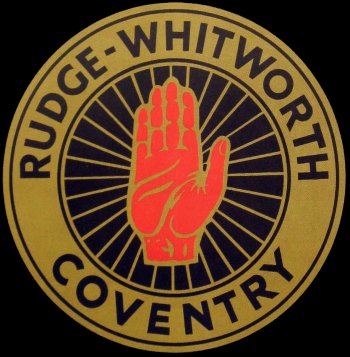



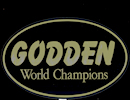

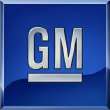
|
|
| |
| |
| |
Norman
Jacobs
Page |
| |
Archie Windmill
Nobby Stock
Malcolm Simmons
Ginger Lees
Phil Tiger Hart Hackney 1938
Stan Stevens
Origins of Speedway
Mike Broadbank
Rye House 1961 |
| |
| I suppose it could be said that my
interest in speedway began the day I was born as I was named after
a speedway rider, Norman Parker, then captain of
Wimbledon (writes Norman Jacobs). |
| |
| My family had been keen speedway
supporters since before the War, in particular my uncles Albert
and Joe, my father's brothers. Sadly, Uncle Albert died a few
years ago, but, at the tender age of 94, my Uncle Joe is still a
regular at Lakeside and Kent Kings. Together with a friend of
theirs, Joly Parker, they visited most of the London tracks, some
weeks managing to fit in a visit every night - Wimbledon on
Monday; West Ham, Tuesday, New Cross, Wednesday: Wembley,
Thursday; Hackney, Friday and Harringay on Saturday. Those were
the days in the capital! |
| |
| As far as I know my own father didn't go
to speedway before the War, but in the late 1940s he, along with
my elder brother, John, were regular visitors to Harringay
Although they went to Harringay every week, for some reason my
brother supported Belle Vue and it was because of this that I got
my name, Norman. John's favourite rider was the Belle Vue captain,
Jack Parker. Norman was, of course, his brother, so John felt that
if it was good enough for his hero to have a brother called Norman
he should have one too. So, when I was born, he persuaded my Mum
and Dad to do just that. |
| |
| My earliest memory of speedway is seeing
the World Championship Final on television some time in what must
have been the early 50s at my grandparents' house and how everyone
laughed at the way the commentator pronounced Ronnie Moore's name
as Moo-er. |
| |
| I also knew the names of a number of the
leading speedway riders through conversations in the house between
my father and brother and I would pretend to be one of them when
out on my bike, cycling round our local park, in particular Split
Waterman and Aub Lawson, as they sounded very romantic to me. |
| |
| Sadly, by the time I was deemed old
enough to go to speedway, all the London tracks bar Wimbledon had
closed down and that was a bit too far away from our Hackney home,
so I didn't actually get to see my first meeting until 11 May
1960. The year before, 1959, Johnnie Hoskins had revived New Cross
and had put on a series of open meetings. In 1960, New Cross
resumed its place in the old National League. On his way home from
work every evening, Dad used to buy a copy of the Evening News. On
Mondays and Wednesdays they would print details of that evening's
meetings at Wimbledon
and New Cross, including a complete heat by heat programme |
| |
| And so it was, that on 11 May 1960, I
read about that night's meeting at New Cross, a Britannia Shield
match against Norwich. I asked my dad if we could go and, to
my great surprise, he said yes. When we arrived
at the track we bought a programme where I saw, to my utter
amazement, the first heat brought together my two boyhood heroes,
Split Waterman and Aub Lawson. |
| |
| Right from the start I was enthralled by
this sport and we became regulars at New Cross until it closed at
the end of the 1961 season. In 1962 we managed to get to a few
meetings at Rye House, then in 1963, New Cross re-opened as did
Hackney, which was great for me, as the track was only a 15 minute
walk from my home. Sadly New Cross folded permanently in 1963, but
the following year, West Ham opened and I became a two tracks a
week man, visiting Hackney and West Ham regularly. I also started
to make the longer trek to Wimbledon when there was anything good
on there, so many weeks I went to speedway three times. |
| |
| I continued going as often as I could
and in 1999 I managed to persuade The History Press to publish a
book on speedway – Speedway in East Anglia - which is another
story in itself that I’ll recount separately.**see
below |
| |
| Although I can’t get along as regularly
these days, my love affair with speedway has continued now for
over 50 years as there is no doubt it is the greatest sport in the
world. |
| |
| ** Norman's Literary Prowess described
in his own words: - |
| |
|
In the introductory piece at the top of my
first page I said I would recount the story of how the History
Press came to publish my first book on speedway, so here goes. |
| |
|
Actually, just to be precise, it wasn’t
exactly the History Press who published my first speedway book it
was a company called Tempus Publishing, who later merged with a
couple of other companies to form the History Press. With that in
mind, here is the story. |
| |
|
By 1999 I had had a few books on local
history published by a few different publishers, and in 1998,
Tempus Publishing asked me to write a book for their series,
“Images of England”. Tempus were a very well known publisher in
the local history field, so it was something of an honour for them
to ask me to write a book for them. I finished the book a few
months later at the beginning of 1999 and decided to take my
manuscript and illustrations to their head office in Stroud in
Gloucestershire. I didn’t have to, I could have just posted it off
as I had mostly done with my other books, but I thought it would
be interesting to pay this leading publisher a visit in person. |
| |
|
On my arrival, I saw the editor who would be
handling my book and he offered to show me round the complex. On
my walk round I saw a number of sports books lying around which
surprised me a bit as I hadn’t realised Tempus dealt in sports
books. I said as much to the editor and he replied that as the
publishers of local history books they saw sport as part of the
local history of a place. He said they didn’t go in for publishing
general histories of sport or histories of big football clubs like
Arsenal or Manchester United but rather those of smaller towns
like Stockport or Rochdale for example as they were part of the
social fabric of the town. |
| |
|
I noticed a number of football books as well
as rugby league and cricket, so I said to him, “Have you ever
thought of publishing a book on speedway?” At that time there were
very few speedway books on the general market and those there were
were generally year books or magazine type books. As far as I knew
there were no real histories of individual clubs being published.
He gave me a funny look and asked me what speedway was! I
explained it to him and he asked if there were many followers. I
said there were something like 30 tracks up and down the country
with devoted followers. |
| |
|
He thought about this for a little while and then said, “I don’t
think we could sell enough books on the history of a single track
to make it worth while. It is just possible we might be able to do
a book on the history of a region. What do you think about that?”
I said, “Well anything that gets a speedway book published is ok
by me. I could do one on London with no problem.” He asked me how
many tracks were still operating in London. I replied, “None.” He
sucked his teeth and said, “That’s no good. I would see sales
being mainly at the tracks themselves not in town bookshops.” So I
said, “What about East Anglia then? There are still four tracks
operating there.” |
| |
|
He had another think and said, “Ok
then, I’ll give it a go. You write a book about the history of
speedway in East Anglia and we’ll publish it. How’s that?”
Delighted with my morning’s work I shook his hand and we had a
deal.
|
| |
|
Later that year I delivered the
manuscript and Tempus published 1200 copies. Less than two weeks
later, the editor rang me to say they had sold out. He said they
were printing 1200 more. They too sold out and by then end of the
third month they were into their third print run. |
| |
|
He rang me again and said the senior
management at Tempus couldn’t believe it as my book on Speedway in
East Anglia had sold faster than all their other sports books and
they said they hadn’t realised what a goldmine there was in
speedway and that they couldn’t get enough of them now. What also
surprised him was the fact that the books were selling in town
book shops rather than at the tracks, in particular in Norwich,
where there was no track at all. He asked me if I would like to go
ahead with my original idea of Speedway in London, which, of
course, became my second book. I also advised him to contact Jim
Henry and Ian Moultray as I thought they would like to do a book
on Speedway in Scotland and Robert Bamford, who I felt would do
one on Speedway in the Thames Valley area. |
| |
|
Speedway in London reached no. 3 in the
Sunday Times Sports Book charts and was another big success,
though it didn’t quite sell as many as Speedway in East Anglia,
which remained the top selling speedway book in the UK for another
five years until overtaken by Sam Ermolenko’s Breaking the Limits.
But then Sam did visit every track in the country flogging it! |
| |
|
After this, Tempus published not only
regional books, but also one club books. I myself had books on
Norwich, Wembley, Rye House, Eastbourne, New Cross and Crystal
Palace published, while others were published on Bristol, Swindon,
Southampton and many others along with biographies, e.g., Tom
Farndon, and autobiographies, like Sam’s book. There were also the
sort of general histories, such as Homes of British Speedway and
History of the World Championship, that Tempus said they would
never do! |
| |
|
For a while Tempus were churning
out speedway books like there was no tomorrow having found a niche
market. However, other publishers began to muscle in and there was
a big upsurge in the number of speedway books being published from
one or two a year to dozens of them. Something for speedway fans
who had been neglected for far too long to get their teeth into.
And I like to think it all started with my visit to Tempus’s
headquarters. |
| |
| Some of my books: - |
| |

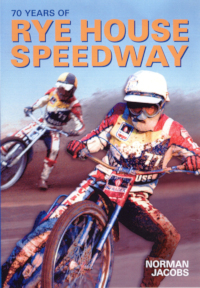
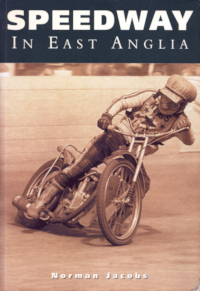
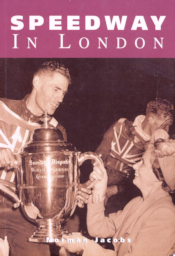 |
| Book Covers Courtesy of Norman Jacobs |
| |
| |
|
| |
| |
| The Origins Of Speedway |
| |
(By Norman Jacobs)
|
The Origins of Speedway
There is an old philosophical paradox that goes, “All that is
certain is that nothing is certain.”
There is no doubt this applies to the origins of speedway.
The first problem we have is what do we mean by speedway? Is it
just motor bikes racing round a small oval track or does the
definition of speedway include no brakes and sliding round the
corners on a loose surface?Certainly if we just take the meaning as motor bikes racing round
a small oval track there can be many claimants to the title of the
first speedway meeting in the world. There are reports of this
activity taking place in America in 1901, in
Ireland
in 1902, in Australia
in 1904, in South Africa
in 1907 and in Prague
in 1908 amongst many others.
Even if we add the no brakes and sliding
round corners ingredients, there is ample evidence to show that
American riders were broadsiding round dirt tracks well before the
First World War. A rider called Don Johns who started around 1909
and won the National Dirt Track Championship in
Chicago in 1912 may have been the first. A
contemporary description of him goes like this, “Don Johns
preferred to barnstorm the 1-mile dirt track circuits of California and the Midwest,
gaining experience as well as a reputation as the hardest fighting
rider in the no-holds-barred game. By 1914, Johns had improved to
such an extent that the Excelsior could not hold him. He would
ride the entire race course wide open, throwing great showers of
dirt into the air at each turn.” How else could you throw great
showers of dirt into the air on the bends if not by sliding? Was
Johns the first speedway rider in the world?
He was followed shortly afterwards by another
American called Albert “Shrimp” Burns who was killed in a track
crash on 14 August 1921. Part of his obituary written by C.E.B.
Clement, which appeared in Motorcycle and Bicycle Illustrated
reads, “I strolled down the track to watch him take the turns.
Here he came with that motor humming a great tune and into the
turn he went. Watching him handle that machine in the long slide
all the way around, I saw in fancy, the then great battler of the
day, Don Johns.For Burns was holding the pole and fighting the
rear wheel in a manner that very closely resembled the work of the
then known hardest fighter of the racing game."
After the War, in the late teens and early
twenties, two more Americans, Maldwyn Jones and Eddie Brinck, were
renowned for the way they threw their bikes in to the bends and
broadsided round, using what was known as the pendulum skid.
By the early 1920s Australia had also discovered the
sport of motor cycles racing round small oval circuits. The
generally accepted wisdom used to be that Johnnie Hoskins
“invented” speedway at Maitland Showground in 1923. Evidence from
America clearly shows that this is not the case, and, even in
Australia there are many reports of meetings similar to that put
on by Hoskins prior to 1923 in places such as Townsville (as early
as 1916), Rockhampton and Newcastle. Eleven months prior to
Hoskins’ much vaunted December 1923 carnival on the grass track at
Maitland, motor cycles had raced on a cinder circuit under lights
at Adelaide’s
Thebarton Oval. Again, in the Adelaide Mail, dated 3 November
1923, there is an article headlined, “Steering into a skid Dirt
Track Methods”. This article goes on to say:
“To steer away
from the direction in which a corner is being taken is quite a
usual practice on level tracks with a soft surface…it appears to
be voluntarily adopted by the experts in order to make the turn at
a higher speed than would be possible in the ordinary way…On a
dirt track the friction available is very small, consequently in
order to corner without skidding, a very low speed would be
necessitated..” So there we have an article explaining the process
by which the “experts” take the corners on dirt tracks over one
month before the meeting at Johnny Hoskins’ meeting at West
Maitland. Indeed, the major argument against speedway
originating on 15 December 1923 at Maitland is the Monday December
17, 1923 Maitland Daily Mercury's report on the Saturday December
15 carnival, which says: -
"For the first time motor cycle
racing was introduced into the programme and the innovation proved
most successful. In an exhibition ride at the last sports several
riders gave the track a good test and they then expressed
themselves satisfied with it. They also stated that it was better
than several other tracks that have been used for this kind of
sport on a number of occasions..." Note that last sentence in
particular. Maitland’s own paper did not see the meeting on 15
December as anything new. The riders themselves were comparing
Maitland to “several other tracks”
Perhaps the boost Maitland did give to the
sport however was to provide speedway on a regular basis as
between 15 December 1923 and 26 April 1924 there were no fewer
than 15 carnival meetings featuring motor cycle racing., with
promoters Campbell and DuFrocq staging six of them and including a
rider by the name of Charlie Datson who was to become one of the
leading pioneers of the new sport of speedway.
By the mid 20s a number of tracks were
presenting motor cycle racing round small oval tracks on a regular
basis. An article describing racing at Newcastle during the 1925-6
season says, "... these machines took the turns by running into
broadside skids ..." while "In the semi-final of the A Grade match
Lamont beat C. Datson after a remarkable exhibition of broadside
skidding around the turns" appears in a meeting report from the
Sydney Showground in August of 1926. By then it would seem that speedway more or
less as we know it today became established and continue to evolve
to the sport we all know and love today. |
| |
| |
| |
|
| |
| |
| The Origins of Speedway in GB |
| |
| (By Norman Jacobs) |
| |
The Origins of Speedway in
Great Britain
As with the origins of the sport
worldwide, the origin of Speedway in Great Britain is not clear cut
either. What is considered by many to be the first speedway
meeting in this country was held on 19 February 1928 at High
Beech, but this is disputed by advocates of Droyslden and
Camberley, both of which are said to have held meetings in 1927.
In fact, if we look back in to the mists of
time, Britain also has
its claimants to the first meeting to be held in the world. There
are reports of motor cycles racing round small oval tracks from
many places including Preston Park (Brighton) 1901, Shepherd’s
Bush (London), 1902 and Ipswich, 1904, but none of these would
have been remotely like speedway as we understand it today.
Certainly by 1927, motor cycle enthusiasts in Great Britain would have been aware of events
taking place in America
and Australia.
Lionel Wills, a Cambridge
undergraduate and keen motorcyclist, visited
Australia
in 1926 and witnessed speedway first hand at the Sydney Royale
track where he saw Charlie Datson and others flinging their bikes
round the corners at impossible angles. He was so enthused by what
he saw that he asked Johnnie Hoskins, the promoter at Sydney
Royale, if he could have a go himself. It is not clear if he
actually did have a go himself but if he did he would probably
have become the first domiciled Briton ever to ride proper
speedway. After his first outing he wrote home to the motor cycle
press in this country describing his own riding experiences and
recounting the hair-raising exploits of the likes of Datson, Paddy
Dean, ‘Cyclone’ Billy Lamont and the American, Sprouts Elder,
urging clubs to take up the sport. In addition, on discovering
Wills was British, Hoskins told him that he hoped to bring
speedway to Great Britain
and the two of them discussed how this might be effected.
Following Wills’s visit in 1926, two more
Britons arrived in Australia in 1927, Captain Olliver and Captain
Geoffrey Malins who were undertaking a round the world motorcycle
trip sponsored by motor cycle manufacturers, C.F. Temple Motors to
publicise their new Temple OEC sidecar outfits.
On the evening of their arrivalthere was
a public dress rehearsal at A J Hunting’s new Davies Park track in
Brisbane in preparation for its official opening later in the
week. A J Hunting was, by now, probably the leading
promoter of this new sport and DaviesPark was a purpose built
loose surface quarter mile track with grandstands, floodlighting
and a regular schedule of meetings. Many of the leading names of
the early days took part in the meetings at DaviesPark
including Vic Huxley, Frank Arthur, Billy Lamont, Dick Smythe and
Charlie Spinks.
Olliver and Malins
would almost certainly have paid DaviesPark a visit as the dress rehearsal was a big occasion
in Brisbane. According
to the magazine, “Motor Cycling”, it was after seeing these top
riders in first class surroundings that Olliver cabled his
brother-in-law, Jimmy Baxter, who was the managing director of
TempleMotors, saying that speedway was making big money in Australia and he felt sure it might do the same
in Britain
if organised properly. Baxter then got in touch with the
Australian promoter Keith McKay. McKay had tried his hand at
racing but had not been very successful. Instead he turned to
promoting and had been responsible for the introduction of
speedway at the very successful Wayville Show Grounds in Adelaide, so Baxter contacted him to discuss how speedway
might be brought to
Great Britain.
In addition to
Wills and the two Captains, another Briton, Stanley
Glanfield, arrived in Brisbane on 16
December 1927 as part of a planned round the world trip undertaken
from the premises of his own business, Glanfield Lawrence
Motors Ltd., in Tottenham Court Road in London.
On the evening of the 17th, Glanfield was a guest of
Hunting’s at Davies Park where he had his first sight of
speedway. Like Wills,
Olliver and Malins before him, Glanfield found this new sport
breathtaking. He was just one of a record crowd which was present
at Davies Park that night to see riders including Vic Huxley,
Frank Arthur, Frank Pearce, Dick Smythe, Billy Lamont, Charlie
Spinks and Sprouts Elder in action.In the Brisbane press the following day,
Glanfield is reported as having made the following comment, “In
England, where motorcycling has become a national pastime, a
programme such as I have seen here tonight would draw crowds of
50,000 or more regularly.” Glanfield also stated that such a
thrilling and exciting sport had never been dreamed of in Britain
where track racing was practically confined to the concrete at
Brooklands.In fact so moved was Glanfield that the
following day he penned a letter to A J Hunting telling him how
exciting he found the whole thing. At one point in the letter he
says, “I believe you intend introducing dirt track racing in
England. Let me assure you that it would be an unqualified
success, providing, of course, you are fortunate enough to find
convenient and suitable accommodation.”This is an interesting statement as it
shows that Hunting must have already announced plans to this
effect.With all these reports filtering back to
this country of an exciting new sport taking place in Australia,
interest was growing in staging a meeting in Great Britain. The
first attempt was made by the Camberley Club on 7 May 1927, who
staged a meeting on Camberley Heath in Surrey on a 440 yard track.
The leading rider at this meeting was C Harman, who won both the
350 cc and the 500 cc events. Another rider at the meeting was
famous female motor cycle racer, Fay Taylour. Camberley is generally discounted today as
the first real speedway meeting in Britain because the course was
rough and consisted of sand which was too loose and deep for
sliding and because competitors raced the wrong way round, i.e.,
clockwise.
The next club to enter the fray was the South
Manchester Motor Club. One of their members, Harrison Gill,
organised a dirt track meeting at a place known as Moorside
Stadium on Dodd’s Farm in Droylsden on 25 June 1927. The track was
probably 600 yards long, although there is no precise record of
how long it was. This time instead of the surface being too deep,
the cinders on the track were packed down hard leaving no loose
dirt at all. Eight hundred spectators witnessed the event. The
first race was won by local motor cycle dealer, Fred Fearnley,
while the winner of the “Experts’ Race” was Charlie Pashley
The most successful rider of the day, however, was Ron
Caves, who managed to win two events.
Both the Camberley and Droyslden events were
“amateurish” affairs staged by people who had probably never seen
real speedway and were going by the reports sent back from
Australia and America. In addition to the fact that the track
surfaces were not conducive to broadsiding anyway the Auto Cycle
Union (ACU) insisted that the motor bikes used be fitted with rear
brakes and in any case the riders thought it unethical to touch
the ground with their feet. If we take our definition of speedway
to be sliding round loose surface tracks, they can safely be
discounted.
Towards the end of 1927, Lionel Wills, who
had by now returned to Great Britain, made a concerted effort to
obtain support for the staging of a proper speedway meeting as he
had seen it at Sydney. Amongst those he tried to persuade were
Fred Mockford and Cecil Smith, who at that time were organising
Path Racing on a mile long circuit around the gravel pathways of
Crystal Palace and put Johnnie Hoskins in touch with them. Wills
himself was a regular performer at these races along with others
who would one day make a name for themselves on the speedway,
including Gus Kuhn, Joe Francis and Triss Sharp.
But it was Jack Hill-Bailey, honorary
secretary of the Ilford Motor Cycle and Light Car Club, who was so
enthused by Wills’ articles that he became the first to take
practical steps to organise a proper speedway meeting in this
country. His first proposal was to organise a meeting on a half
mile trotting track in Ilford called Parsloes Park, which was
owned by the London County Council (LCC). Hill-Bailey asked the
Ilford Club’s president, Sir Frederick Wise, the MP for Ilford, to
conduct negotiations with the LCC. Sadly, just as the negotiations
got underway, Sir Frederick died and the discussions were put on
hold.
Hill-Bailey then looked around for another
site and found what he considered to be the ideal site, a disused
cycle track at the back of the King’s Oak Public House in Epping
Forest near Loughton at a place called High Beech. He was granted
permission by the owners to convert the cycle track into a
speedway track and then applied to the ACU for permission to run a
meeting on 9 November 1927. Hill-Bailey was a good friend of Jimmy
Baxter’s and was therefore aware that Baxter was also interested
in introducing speedway to this country. Consequently, he reached
an agreement with him for the meeting to be jointly organised by
his own Ilford Club and Baxter’s Metropolis Club, one of the
largest motor cycle clubs in the country, and of which Baxter was
president. The ACU turned down the proposal on the grounds that 9
November was a Sunday. However, they added that if a new
application was made asking permission for a closed meeting, that
is one restricted to club members only, they would grant it.
Consequently Hill-Bailey reapplied for permission to run a closed
meeting on what has probably become the most famous date in
British speedway history, 19 February 1928. After a three hour
inspection by four ACU officials who included prominent motor
cycle racer and future Wembley captain, Colin Watson, permission
was granted.
In the meantime, Baxter’s Australian contact,
Keith McKay, set sail for England on the
SSOronsay on 10 December 1927 to join up with him as promoter and
director of a new company dedicated to promoting speedway, Dirt
Track Speedways Ltd. While on board the Oronsay, McKay met up with
another speedway rider, Billy Galloway, who was working his
passage as the ship’s barber. It is not known for certain whether
Galloway knew about plans for the introduction of speedway in
Britain or whether his involvement just came about by a chance
meeting with McKay on board the Oronsay. Whatever the reason for
his being on board the Oronsay, Galloway joined McKay and they
both went to see Baxter on their arrival.
Although no longer
involved as joint promoter, Baxter was still taking a prominent
role in the organisation of the High Beech meeting and as a
precursor to it, he arranged for McKay and Galloway to give a
demonstration of the art of real speedway at Stamford Bridge, the
home of Chelsea Football Club, early in 1928. This demonstration
was filmed by Pathe News and must certainly have been the first
time proper speedway was seen in this country. It is probable that
this film, being a Pathe News feature, would have been shown in
cinemas around the country and certainly in London, thus giving a
massive publicity boost to the High Beech meeting and could
explain why so many people turned up on that cold February day in
1928 to witness what is now generally accepted as the first
speedway meeting in Great Britain. Hill-Bailey had planned for
around 2000 spectators but in fact over 20,000 attended.
Two of the riders
at this meeting were, of course, the Australian pair, McKay and
Galloway, and one of the officials was Jimmy Baxter. One of the
prominent English riders to take part was Alf Medcalf, vice
chairman of the Colchester Motor Cycle Club. And in fact, although
Hill-Bailey was the driving force behind it, the meeting was
jointly organised by his own Ilford Club and Medcalf’s Colchester
Club, whose club President, Ernie Bass, was another of the
officials at the meeting. Incidentally, while Baxter and Bass
officiated, Lionel Wills was content to take on the job of track
raker.
Although generally
accepted as the first speedway meeting in Britain, it was, in
fact, little different to the Droyslden meeting in that the
surface was hard packed and sliding was impossible and, in any
case, as before, the ACU ruled that the bikes had to be fitted
with rear wheel brakes and most riders still considered it wrong
to put their foot on the ground, although there is photographic
evidence to show that some at least did touch the track with their
foot. In addition to this, all the riders, apart from McKay and
Galloway, had never seen speedway before so were unsure what they
were supposed to do and the brakes were used often and violently
as the uninitiated tried their best to race round the small
circuit. When Galloway came out for his first race he got off to a
bad start as his engine cut out entering the second bend, causing
him to drop back to last place. Getting over this temporary
problem, he opened the throttle full out and swept in to the third
bend but instead of broadsiding he went in to a series of
spectacular skids. Eventually his greater experience told and he
passed the others to take the chequered flag in first place.
However, much to Hill-Bailey’s disappointment as he had been
expecting Galloway and McKay to demonstrate just what a
spectacular sport speedway was, Galloway had won the race without
once actually putting his foot down. He explained afterwards that
the surface was not suitable for sliding. He had been used to the
loose surface of the Australian dirt tracks but High Beech was a
hard rolled cinder track. Another big handicap for him was that he
was unable to use his own bike and instead had to borrow Freddie
Dixon’s Isle of Man TT machine with road racing gearing and he
never worked out how to get out of bottom gear.
In all forty two
riders took part in the day’s events on their own road or trials
bikes. Some riders made the effort to strip off unwanted items,
but other didn’t even do that, racing with their lamps, horns and
speedometers still in place. The very first race on that
auspicious day was the heat one of the Ilford Novice Event and was
won by Mr A Barker on his Ariel. However, given the importance of
that race to the history of speedway it was a complete anti climax
as Mr Barker was the only competitor in the event and he tootled
round sedately more concerned with not falling off and reaching
the finishing line than with giving a demonstration of racing.
Meanwhile, Hunting
had set sail for Great Britain on 23 January and probably because
he had heard about the High Beech meeting left the ship at Naples
and continued his journey overland so that he could arrive in time
for the meeting as his ship was not due to dock in London until 23
February, four days too late. He eventually arrived midway through
after a dash to the track by taxi. Although the meeting itself was
a big success, Hunting, who knew how it should have been run, was
less than impressed. He sought Hill-Bailey out and said to him,
“My boy you’re all wrong – this isn’t the way to run a dirt track
meeting.” He explained to Hill-Bailey how the track should be
redesigned and suggested several other improvements including the
need for a good wire safety fence.
It is probable that
because the likes of Wills and McKay had been involved in the
organisation Hill-Bailey already knew this to be true, but he had
been hamstrung a) by the lack of funds to do what he knew should
have been done and b) the ACU’s insistence on rear brakes. To
overcome the first problem, the Ilford Club made a financial
appeal to two well-known wealthy supporters of motor cycle racing,
Alderman F D Smith and W J (Bill) Cearns, head of The Structural
Engineering Company, a large engineering firm in nearby Stratford.
Cearns agreed to carry out the work needed for nothing and by 29
March, The Motor Cycle
was able to report, “Considerable strides have been made in the
reconstruction of the King’s Oak Speedway in High Beech, Loughton
and the track will be ready for practising on Saturday. The width
of the track has been increased to 40 ft on the bends and 30 ft on
the straights, and later there are to be concrete terraces and a
grandstand for spectators. Three meetings have been arranged.”
The first meeting
to be held on this new track took place on 7 April 1928, Easter
Saturday, and was probably the meeting that
The Motor Cycle referred
to when it said “the track will be ready for practising”. There
are no detailed reports of this meeting as the main meeting was
the one held on 9 April, Easter Monday, or rather the two
meetings, as there was one in the morning and one in the
afternoon.
This time the track
surface had loose dirt and the ACU had lifted their embargo on
rear brakes and so, it is likely that, for the first time in this
country real speedway was seen in a competitive setting.
Headlining its report, “Spectacular Racing Before Big Crowds at
the Reconstructed King’s Oak Speedway, Loughton!”,
The Motor Cycle went on
to say, “Thrills! Thrills! Thrills! 17,000 spectators at the
King’s Oak Speedway, Loughton, had a full quota of them on Monday
when the Ilford Club staged a dirt-track meeting on a track which
is a marvellous improvement on the one used at the first event
nearly two months ago.” Three riders were able to demonstrate the
art of broadsiding on the loose dirt surface, Colin Watson, Alf
Medcalf and the enigmatic, Digger Pugh. Digger Pugh was a bit of a
mysterious character who had turned up at High Beech a short while
earlier claiming to be a speedway rider of some renown from
Australia and offered to school the British riders in the art.
Hill-Bailey appointed him as coach and machine examiner. The fact
of the matter is however that Digger Pugh had no pedigree as a
rider in Australia at all and it is doubtful if he had even been
in Australia since speedway had started there. Whatever his
background, he was able to perform himself and was responsible for
training up some of the best of the early British riders like
Watson and Medcalf and also Roger Frogley,
Although it is
likely that the two meetings on 9 April saw the first real
speedway in this country, it should be mentioned that, on 3 March,
the South Manchester Motor Club held another meeting, this time at
Audenshaw with McKay and Galloway taking part. Once again a large
crowd of something like 20,000 turned up to see the two
Australians as well as the first appearance on a small motor cycle
track of riders of the calibre of H R “Ginger” Lees, Alec Jackson,
Bob Harrison and “Acorn” Dobson. Once again it must be doubted
whether it was real speedway as we know it as firstly the track
was just over half a mile long and secondly, as McKay himself
complained, the track had no loose dirt on it so broadsiding was
not possible. And then, on 7 April, Greenford held its first dirt
track meeting. Again it was a half mile track, although one of the
organisers, Mr Frank Longman, felt it was ideal for broadsiding.
The racing was dominated by Billy Galloway, but it seems that not
even he actually did any broadsiding, leaving the 9 April High
Beech meetings as the most likely claimant to the first real
speedway seen in this country.
After these
pioneering events, the Australians began to arrive. Hunting had
already arranged for most of his top stars to come to Britain and
on 10 April 1928, the SS Oronsay left its final port of call in
Australia when it set sail from Freemantle with riders of the
calibre of Vic Huxley, Frank Arthur, Frank Pearce, Charlie Spinks
and Dick Smythe on board. Also on board was the other well-known
promoter, Johnnie Hoskins, with his riders, Ron Johnson, Charlie
Datson and Sig Schlam. Hunting had already been in talks with the
GRA and had taken out leases on Harringay, Wimbledon, London White
City and Hall Green (Birmingham) to operate speedway, while
Hoskins was headed for Crystal Palace where, following Lionel
Wills’ introduction, he had agreed to act as advisor to Fred
Mockford and Cecil Smith who were planning to open their new track
on 19 May.
With the arrival of
these Australian stars in May and some of the major London tracks
starting operations that month, speedway took off in a big way and
it was probably Hunting’s organisation, International Speedways
Limited (ISL), that set the standard for the future of speedway in
this country. As well as having the best riders and some of the
leading stadia, ISL also organised the leading events in the
country such as The Gold Helmet and also set up the first
dedicated speedway magazine, Speedway News, under the editorship
of Norman Pritchard who had been Hunting’s publicity officer at
Davies Park.
Although ISL took
speedway to new heights in Great Britain during 1928 it was
probably the introduction of league speedway the following year
that had the most lasting effect and turned speedway in to the
sport we really know it as today. It is said that the brains
behind league speedway was Jimmy Baxter, but the only thing
certain about that statement is that it is not certain…but that’s
another story… |
| |
| |
|
| |
| |
| Archie Windmill’s Finest Moment |
| |
| By Norman Jacobs |
| |
 |
| |
| Never one of the top stars, Archie
Windmill was always a never give up trier, who helped form the
backbone of the Wimbledon team in the late 40s Norman Parker era.
He was also one of the tallest riders ever to appear in British
speedway and was referred to by speedway journalist, Basil Storey,
as the ‘long-legged, poker-faced, imperturbable Windmill’. |
| |
| Archie’s greatest moment probably came in
the National League match between Wembley and Wimbledon held on 8
May 1947. He was already having a good night, having beaten the
Wembley captain, Bill Kitchen, in heat 4 and coming in second
behind his partner, Norman Parker, in Heat 9. In spite of Archie’s
sterling efforts however, the Dons were eight points down after
heat 11 with just three heats to go. Archie was due out in two of
those heats, 12 and 13, and despite Basil Storey’s description of
him, Archie said later that he was feeling very perturbed at this
point. Out he came in heat 12, once again partnering Parker and
once again amazingly recording a 5-1, thus reducing the deficit to
four points. |
| |
| With just a short break he was out again
in the next heat, this time up against the great Split Waterman,
but with Lloyd Goffe as his partner. Goffe had injured his wrist
earlier in the meeting and was not 100% fit. Nevertheless, Archie
saw him round to yet another 5-1, drawing level with Wembley. With
11 paid 12 points, Archie had scored an amazing maximum against
the team that completely dominated British speedway in the late
40s. Not only that but he had done it in the heart of the Lions’
den, the Empire Stadium itself. |
| |
| With the scores now at 39-39 there was one
more heat to come. This saw Wembley’s Bob Wells and Bronco Dixon
up against the Dons’ Cyril Brine and Dick Harris. With Archie
cheering his team mates on from the pit rails, this last heat
turned out to be rather eventful as Wells fell at the first bend,
and then, in his excitement, Harris crossed the white line and was
disqualified. This left just Dixon and Brine to battle it out.
Brine was in the lead but Dixon was snapping away at his rear tyre
the whole way. On the last bend Dixon swept round the outside but
Brine just managed to hold him off for the 3 points and a single
point victory for the Dons over the mighty Lions. |
| |
| Although there was no doubt it was a team
effort, it was Archie who had won the two vital heats to ensure
victory. Eight points behind after heat 11, Archie’s two wins
provided the chance Cyril Brine took with both hands. |
| |
| Archie said afterwards that that meeting
provided his greatest thrill in speedway |
| |
| Another Photo of Archie |
| |
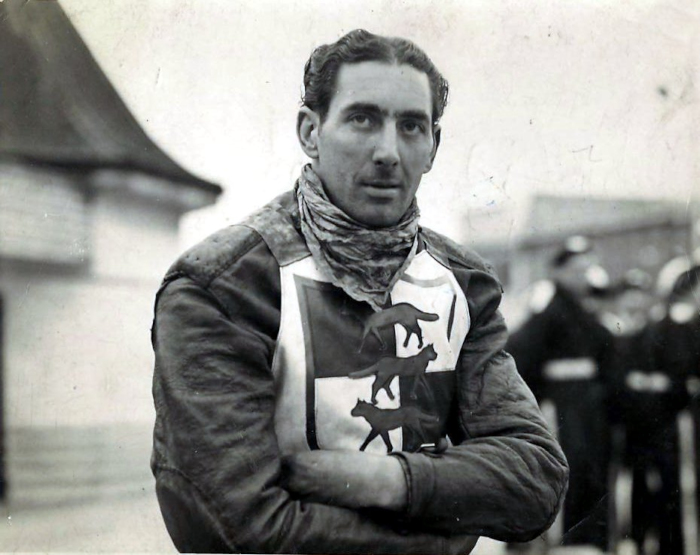 |
| Archie Windmill in Walthamstow Wolves
colours - Photo Courtesy of J Spoor |
| |
| |
| |
|
| |
| |
An Interview
With The Late
Nobby
Stock |
By Norman Jacobs |
| |
 |
| |
|
Nobby Stock rode for Hackney and Dagenham before the
War and for Harringay, Bristol and Ipswich after. He was never
what you might call a superstar but was always a first class team
man and an excellent second string; one of the unsung heroes of
speedway, without whom the sport could not exist. I once asked a
former Harringay supporter who he would select as his all-time
‘fantasy’ Harringay team. Without hesitation he pencilled in Nobby
in the no. 2 position. |
| |
|
When I was carrying out research for my book,
Speedway in London, I
visited Nobby at his home in Clacton-on-Sea to talk about his days
at Harringay. I was hoping that this would be just the first of a
number of visits but sadly Nobby died not long after I met him.
So, as a tribute to Nobby, although our discussion was only really
a preliminary one and not as in depth as it would have
been had I known it was going to be my last chance to speak
to him, I thought it would be worth as there are one or two
interesting facts and little snippets that had probably not been
published before. |
| |
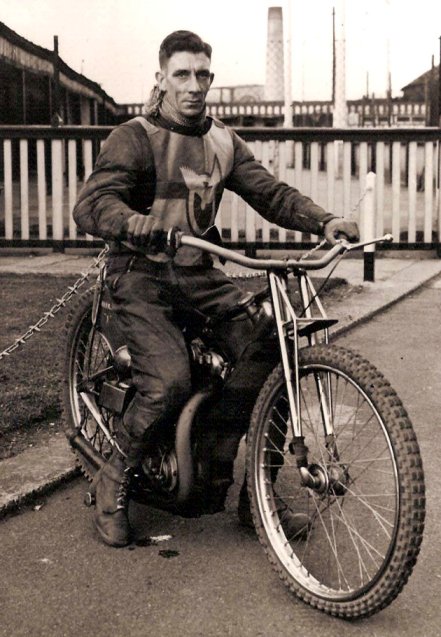 |
| Nobby Stock - Photo Courtesy of J Spoor |
| |
|
NJ: How did you first get in to speedway? |
|
NS: I lived in Rainham in Essex, just round the corner
from Frank Hodgson, the Dagenham and Hackney captain. I used to
help his mechanic clean his bike. When I was 11 I bought a belt
driven Raleigh for 1/- and raced it on the village green at
Rainham. Some of the other boys and I made our own track by
clearing the grass away and making a cycle speedway circuit. I was
also a member of the West Ham Supporters’ Club. If you were a
member it cost you 7d to get in instead of the normal admission
price of 1/2d. Johnnie Hoskins was a great showman of course and
made the whole evening worth the money. In the interval he used to
arrange camel races, hoop races for kids, horses v. motor cycle
races and so on. |
| |
|
NJ: When did you first graduate to the real thing
yourself? |
|
NS: When Arthur Warwick started his speedway school at
Dagenham I went along to have a go. I spent all my savings on a
bike. The bike had originally been Eric Chitty’s and I got it for
£70. As well as Dagenham I had a few rides at Smallford, Arlington
and Rye House. And then in 1938 I signed for Hackney. Of course
just as I was starting to make a name for myself the War came
along and put a stop to speedway racing in England. |
| |
|
NJ: I believe you managed to race out in Italy during
the War. |
|
NS: Yes. I was responsible for organising Army Speedway
Racing in Italy and helped build a number of tracks out there. I
raced at Trani, Bari, Molfetta and Naples. I won a number of
trophies. At one time I held all the track records at Naples
except the four lap flying start. One of my fellow racers out
there was Split Waterman. |
| |
|
NJ: What happened after you returned to England? |
|
NS: I was demobbed on 4 February 1947 and on the 5
February I received a telegram from Fred Whitehead and Fred Evans,
who had promoted speedway at Hackney before the War, asking me if
I could turn out for Harringay. I arrived for the opening meeting
on Good Friday and there was snow all
over the place. Anyway, I was signed up for the team and
told I would be partnering Vic Duggan. Most of the Harringay team
at that time were Australian. I felt quite lonely as an English
rider! The
following
season, 1948, I was loaned out to Bristol. I had one season there.
They wanted to keep me but Harringay recalled me for 1949. |
| |
|
NJ: What was it like partnering Vic Duggan? |
|
NS: Well you never asked Vic what starting position he
wanted as he always took one or two. He used to say to me, “You
get a good start, Nobby, and I’ll see you home.” But he never did!
But he did use to help out the other riders in the team
whenever he could. If there were four Harringay riders in the
scratch race final, Vic would inevitably win, but he would always
split the prize money
four ways. He was a great rider and it was such a disappointment
when he fell in the 1947 British Riders’ Final after completely
dominating the speedway scene that year. It was unheard of for Vic
to fall. |
| |
|
NJ: Were there any other characters in the Harringay
team? |
|
NS: Well, of course, Split Waterman was mad just like
Bruce Abernethy. I remember once George Kay and Wal Phillips took
us to Paris as a reward after we’d won a trophy – I can’t remember
what at the moment – but Bruce wanted to climb to the top of the
Eiffel Tower. Lloyd Goffe was another character. Every time he
rode he used to put cotton wool on the cheeks of his backside
because he sweated so much! |
| |
|
NJ: You left Harringay for Ipswich in 1953. What did
you think of Ipswich? |
|
NS: I wasn’t too keen on it because it was a big track.
I preferred small tracks. I used to ride better on small tracks or
wet tracks as they brought every else down to my speed! The best
night I ever had was at Wembley when I got 9 paid 11 out of 12. It
was raining that night! |
| |
|
NJ: Thank you Nobby. |
| |
|
| |
| |
|
The Day Malcolm Simmons Became A Star!
|
|
By Norman Jacobs
|
|
|
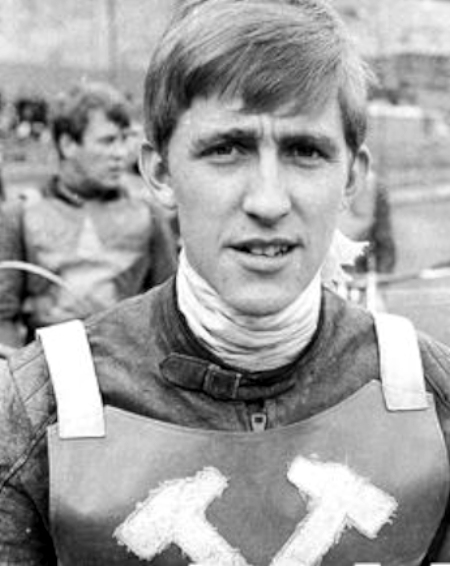 |
|
Picture Courtesy of Norman Jacobs |
|
|
|
Malcolm Simmons |
|
|
|
The best meeting I ever
saw: The day Malcolm Simmons became a star! (Norman Jacobs
writes).
By 1965, with the demise
of New Cross two years earlier, I had become a confirmed West Ham
supporter, going regularly every week to Custom House plus quite a
few away matches. 1965 was the first year of the British League as
well as a new Knock Out Cup competition based on football’s F.A.
Cup with just one leg and the luck of the draw which team got
drawn at home.

Picture Courtesy of Norman Jacobs
West Ham 1965
In that year, one of the
Quarter Final matches saw a local derby London tie with West Ham
drawn at home to Wimbledon. Before the tie, the two teams appeared
to be evenly matched and so the match proved. With one heat to go
the scores were level at 45-45. That final heat saw the Wimbledon
pair, Olle Nygren and Reg Luckhurst, shoot in to an early lead
over West Ham’s Brian Leonard and Norman Hunter and it looked all
over for the Hammers when suddenly Luckhurst’s engine blew up
resulting in a 3-3 and a tied match at 48-48.
Having drawn at West
Ham, Wimbledon looked a good bet to take the tie in the replay on
their own track. But there was even worse news for West Ham as
their top rider, Sverre Harrfeldt, was injured the previous
evening at Hackney and unable to take part and their third heat
leader, Norman Hunter, was also unable to ride as it was his
wedding day!
There were no guests
allowed so the Hammers had to resort to filling the places of two
heat leaders with Tony Clarke, making his racing debut, and a
Wimbledon junior, Geoff Hughes. Only Ken McKinlay was a recognized
heat leader and, although by now a team regular, it should be
remembered that at this time West Ham’s 19 year old Malcolm
Simmons was just a reasonable five point average second string who
had shown no signs of the great rider he was to become in later
years. No-one, not even the West Ham supporters present that
afternoon, gave the Hammers much hope.
By heat six it looked as
though Wimbledon’s superiority was about to assert itself as
Wimbledon skipper, the great Olle Nygren. along with the
experienced Jim Tebby, took a 5-1 against West Ham’s newcomer,
Tony Clarke, and second string, Brian Leonard. The lack of two
heat leaders looked as though it was now beginning to tell.
But as West Ham were six
points in arrears it meant they could use a tactical substitute
and they wasted no time bringing in Ken McKinlay for reserve Ray
Wickett in the very next heat. The line-up for heat seven was
therefore Bob Dugard and Keith Whipp for the Dons, Malcolm Simmons
and Ken McKinlay for the Hammers.
The young Simmons shot
away from the gate with McKinlay behind him and that’s how the
heat finished. A 5-1 for West Ham and four points pulled back.
Simmons’ time of 66.2 was the fastest of the night.
The next heat saw
McKinlay out again, this time in a scheduled ride, with old
campaigner Reg Trott lining up against Reg Luckhurst and reserve
Mike Coomber. Some brilliant team riding by McKinlay and Trott
kept Luckhurst behind them and with Coomber falling, it meant
another 5-1 to the Hammers and, unbelievably, at the half-way
stage, West Ham now found themselves with a two point lead.
With Nygren and Tebby
lined up against Simmons and Wickett in heat 10 it looked as
though the Dons would edge back in to the lead, but, once again,
Simmons rose to the occasion and beat Nygren in the second fastest
time of the night. Heat 12 saw another astonishing turn of events
as Wimbledon’s Bobby Dugard fell and was excluded from the re-run.
It was a simple matter for McKinlay and Trott to defeat Whipp and
take a 5-1.
It was now West Ham who
were six points up and it was now Wimbledon who used a tactical
substitute as they brought in Nygren for reserve, John Edwards.
Unfortunately, it did not have the desired effect as, for the
second time that night, West Ham’s new hero, the young Malcolm
Simmons, beat Nygren, leaving West Ham still six points in front.
This time though, Simmons had done it the hard way, coming from
behind and taking the Wimbledon captain on the last lap.
With just three heats to
go, time was running out for Wimbledon and the impossible suddenly
looked possible. However, a Nygren and Dugard 5-1 over Trott and
Leonard put them back in with a chance and when, in heat 15, Tebby
and Coomber pulled off a 4-2 against Clarke and Hughes, the
scores, were back to level with one heat to go.
The line-up for that
final heat saw Keith Whipp and Reg Luckhurst for Wimbledon against
Ken McKinlay and Malcolm Simmons for West Ham. The tension around
the stadium was palpable. Everyone was holding their breath. A
match which at the beginning of the afternoon had seemed likely to
be very one-sided had now come down to a last heat decider.
To some extent the final
race as a race was a bit of a disappointment as Simmons once again
flew off from the start and never looked to be in any danger and
with McKinlay settling for a steady third place, the match was won
by West Ham by 49 points to 47.
The small band of
Hammers’ supporters who had made the trip across London couldn’t
believe what had happened. The hero of the hour was the 19 year
old Malcolm Simmons. He had beaten the Wimbledon captain, Olle
Nygren, twice and had set the three fastest times of the night. In
fact he still wasn’t finished.
In the second half
scratch race event, the Cheer Leaders’ Trophy, he won the first
heat, beating, McKinlay, Luckhurst and Dugard and then went on to
win the final, once again beating Nygren. As if that wasn’t
enough, a special Handicap race was held with Simmons starting off
20 yards, Nygren off 10 and Trott, Leonard and Tebby off scratch.
Yet again, Simmons got the better of Nygren, even with his
handicap.
As for me, although that
match was held 52 years ago I can still remember it as if it were
yesterday. In fact, I can remember it better than matches I saw
last season. It was just such an amazing afternoon. I went along
there with a few other Hammers’ supporters expecting a reasonable
match but when it was announced just before the
meeting started that
neither Harrfeldt nor Hunter would be taking part we seriously
considered going home. The Wimbledon supporters around us were
saying things like, ’You’ll be lucky if you get 20 points’ and
’This is going to be the biggest thrashing of all time.’ Of
course, we gave back as good as we got but in our hearts we felt
they could well be right.
But suddenly there was
this rider called Malcolm Simmons, who we had seen rise from the
ranks of a second halfer at West Ham to a reasonable five point
second string but no more, taking on and beating the likes of Olle
Nygren and Reg Luckhurst on their own track in the fastest times
of the night. He was just phenomenal.
Recalling the match
later in an interview I carried out with him, Malcolm Simmons said
that the West Ham team had gone to the meeting thinking they would
get thrashed but somehow the whole team had risen to the occasion.
He went on to say,“It was the first good meeting I ever had for
West Ham. I just came good on the night.”
As we now know, Simmons
went on to become one of Great Britain’s greatest ever riders and
runner-up in the 1976 World Championship, World Pairs Champion in
1976, 77 and 78, World Team Champion in 1973, 74, 75 and 77 and
British Champion in 1976. He was capped 80 times for England,
seven times for the British Lions (touring Australia), five times
for Great Britain and four times for the Rest of the World.
But it all started that
night and I feel very privileged to have been there to witness
what must have been one of the best matches of all time and one of
the most outstanding personal performances of all time.
|
| |
| |
|
| |
| |
| Ginger Lees |
| |
|
By Norman Jacobs
|
| |
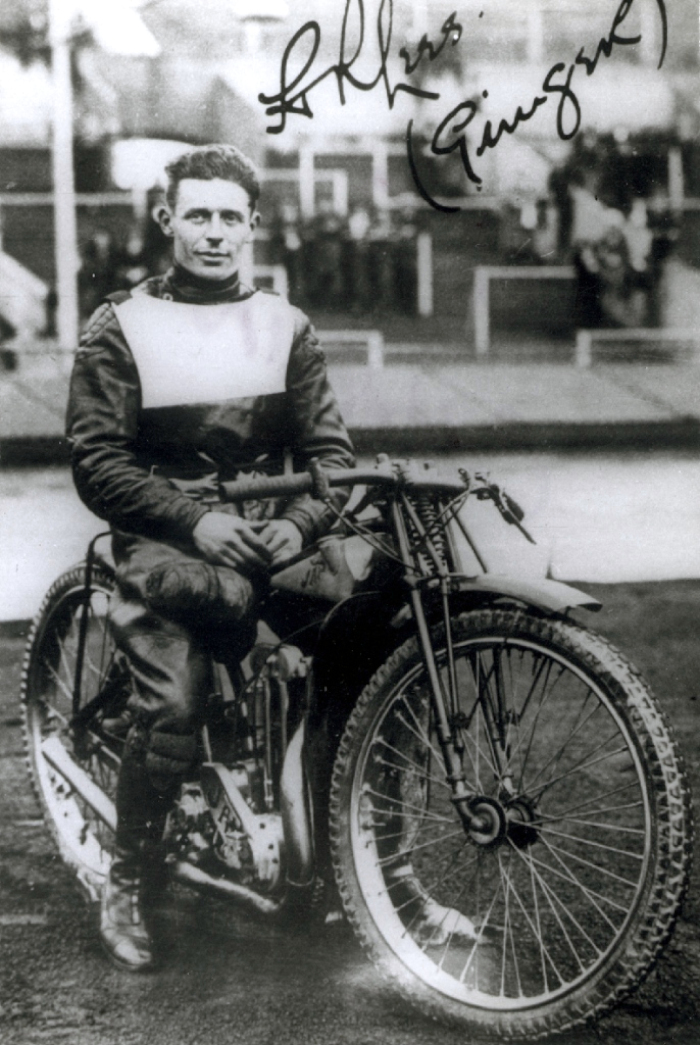 |
| Picture Courtesy of Norman Jacobs |
| |
|
Harold Riley “Ginger” Lees: Was he the first foot forward rider? |
| |
| It is said that Ginger Lees was the first
exponent of the foot forward style of riding anywhere in the
world. When the Australians and Americans brought the sport to
this country, they all used the spectacular leg trailing style.
However, Lees reasoned that if you didn’t have to lean your bike
so far over sideways entering a corner as all the leg-trailers had
to do, it would become upright much earlier leaving the bend and
so give more tyre traction. Instead of trailing his left leg
therefore, he pushed it forward on entering the bends. He did this
to such an exaggerated extent that, at times, it looked as though
he was standing over his bike. But it worked and this style of
riding was soon adopted by other top-class riders including Eric
Langton, Joe Abbott, Gus Kuhn and Wembley’s Harry Whitfield. |
| |
| So what do we know about him? Born in 1905
in Bury, Lancashire, Harry Riley Lees, known as “Ginger” because
of his thick shock of red hair, was one of the leading motor
cyclists from the North of England before the advent of speedway.
His first venture into competitive motor cycling was at the age of
14 when he took part in road racing, trials, rough riding events
and grass track racing. In 1927 he won the Gold Medal in the
International Six Days’ Trial, one of motor cycling’s premier
events, and, in 1928, he finished 19th in the Isle of
Man Junior TT race riding a New Imperial. |
| |
| When Audenshaw staged the first recognised
speedway meeting in
Manchester
on 3 March 1928, the spectators witnessed Lees, mounted on a
Rudge-Whitworth, sweep the board. He moved on to Manchester White
City and then, when league racing began in 1929, he signed up for
Burnley. |
| |

 |
| Cigarette Card Courtesy of David Pipe |
| |
| He moved to Liverpool in 1930 and Preston
in 1931. By then, he had become one of the top English riders in
the sport and was chosen to ride for his country in the third
England
v. Australia Test match of 1931 at Wembley. Although he had never
seen the track before he won his first race and recorded the
fastest time of the night, just 3/5 of a second outside the track
record. |
| |
| Lees’ Test match debut did not go
unnoticed by the Wembley management and he was soon signed up for
the Lions by Johnnie Hoskins. He easily topped the Lions averages
in 1932 with a cma of 10.25. In 1933 he suffered from an ankle
injury and his average dropped to 8.99, though when he was fit he
still showed what he could do, scoring 54 points out of a possible
60 between 22 June and 13 July. He returned to the top of the
Wembley averages the following year with 9.88, but the following
year he broke his ankle in Wembley’s first League match of the
season. He made a brief return during the season and then retired
but was persuaded to make a comeback in 1936. Although his scoring
power was down on his best years, he still maintained an 8.00
average as the lions’ third heat leader, a position he maintained
in 1937, at the end of which season he finally retired for good. |
| |
| He was an automatic choice for
England
between 1931 and 1934 and at the end of 1934 he was England’s all-time top scorer. He
returned to ride for
England
in 1936 and 1937. At the end of his Test career he had ridden 21
times for England and
scored 197 points. He still holds the record for the highest
scores in individual Test matches, scoring 20 in the first Test
match of 1933 and 22 in the second Test. This was under the 4-2-1
scoring system. |
| |
| Lees reached the final stages of the Star
Championship in 1932 and again in 1934 when he finished third. He
also reached two World Championship finals, finishing 14th
in 1936 and ninth in 1937. |
| |
| He was very confident and self-assured
almost to the point of cockiness, but he could deliver when
challenged. One day at the Empire Pool, he was swimming with some
other Wembley riders when he boasted that he could do a swallow
dive off the top diving board. The others dared him to try. Lees
climbed up the tall ladder and made a dive an Olympic champion
would have been proud of. |
| |
| Perhaps a forgotten name these days, but
Lees was undoubtedly one of the pre-War greats of speedway and was
responsible for a style of riding that has served speedway well
for 90 years. |
| |
| |
|
| |
| |
| Uncle Albert! |
| |
|
By Norman Jacobs
|
| |
|
In the late 1930s, my Uncle Albert became a
passionate speedway supporter. In the days when you could visit a
speedway track every night of the week in London he often did. But
his real heart was with Hackney Wick and some years ago I asked
him what his memories were of Hackney Wick. |
| |
|
Me: Which riders do you remember most from
your time going to Hackney Wick?
|
| Uncle Albert: I can remember Frank
Hodgson, who was the captain at one time, also Tommy Bateman, Doug
Wells, Jim Bayliss, he was killed in a motor accident in Australia
you know, Archie Windmill and Phil “Tiger” Hart. And there were
the reserves, Jack Tidbury, who had a Klondyke beard, Ken Brett,
Charlie Dugard and Nobby Stock also Bill Case. |
| |
| |
| Phil "Tiger" Hart |
| |
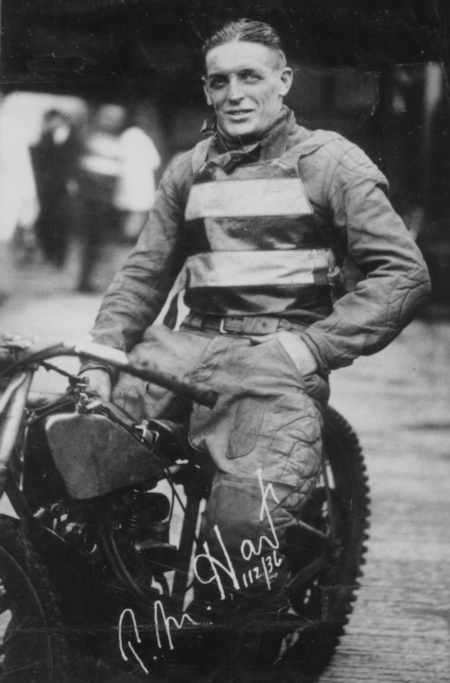 |
| Courtesy of Norman Jacobs |
| |
|
Me: What do you remember about them? |
| UA: I can remember that Phil Hart never
sat on his bike at the start, he would stand over it looking at
the release mechanism. When the tapes flew up he jumped on his
seat and flew off. His front wheel would invariably go up in the
air. Everyone knew him for this, for the way he started. Also Doug
Wells used to sit bolt upright like a soldier. He never crouched
over his bike. |
| |
|
Me: What about Frank Hodgson?
|
| UA: He was great. He never seemed to
lose at Hackney. He won everything. Doug Wells also very rarely
lost to the opposition. |
| |
|
Me: Archie Windmill was a good rider as well
wasn’t he? |
| UA: Actually, I wasn’t so keen on Archie
Windmill, I could take him or leave him. He had a very unusual
style. He stuck his left foot out well forward, and I mean well
forward, it seemed to reach out further than the bike. He never
seemed to bend it. There was one match though when we went to
Wembley to race in a charity match, a shield of some sort. I
didn’t go to it as I felt we were in for a right pasting away to a
big club like that. But the next day, the papers were full of it
and how Archie Windmill had scored a maximum! I couldn’t believe
it. I thought, he never gets a maximum at Hackney, how could he
get one at Wembley of all places? In spite of that we still lost,
though it was a much closer result than I thought it would be. |
| |
| |
|
| |
|
|
|
Hackney 1938 |
| |
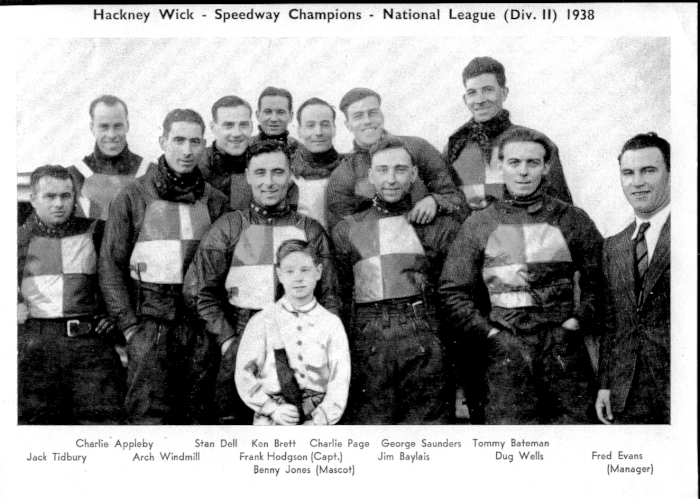 |
| Courtesy of Norman Jacobs |
| |
| John says: Canadian Charlie Appleby was
killed in a crash at Brough Park Newcastle in 1946 when he was
riding for Birmingham. He was the 2nd fatality that year at
Brough Park! |
| |
|
Me: That was when Hackney Wick were in the
second division wasn’t it? |
| UA: Yes, I can remember seeing Bradford,
Nottingham and Leeds visit. I can remember the Nottingham match in
particular because of their star rider, George Greenwood. Now,
Doug Wells was a bit like Frank [Hodgson] at home and very rarely
lost a race, he was always miles in front of everyone else, but
George left him standing. We were absolutely amazed. |
| |
|
Me: Hackney were also in the First Division
at one time weren’t they? |
| UA: Oh yes, that was when Dicky Case was
the captain. He was very big, like an elephant! He left to go to
Rye House to become their manager as well as a rider. |
| |
|
Me: Did you ever go to away matches? |
| UA: I went all the time to the other
London tracks. I can remember New Cross in particular. It was only
260 yards, it was like going round in a circle. Georgie Newton was
their captain. They also had Bill Longley, he came to Hackney for
a few second half guest appearances. I liked watching him. He
stood just barely 5’0” and had to have a sandbag on his pillion
because he was so light. His bike would run away with him if he
didn’t have it on there to weigh it down a bit. |
| |
|
Me: You mentioned Georgie Newton. I believe
he was a very spectacular rider wasn’t he? |
| UA: Oh yes. He had very broad shoulders
and stooped over his handlebars, a bit like Jack Ormston. |
| |
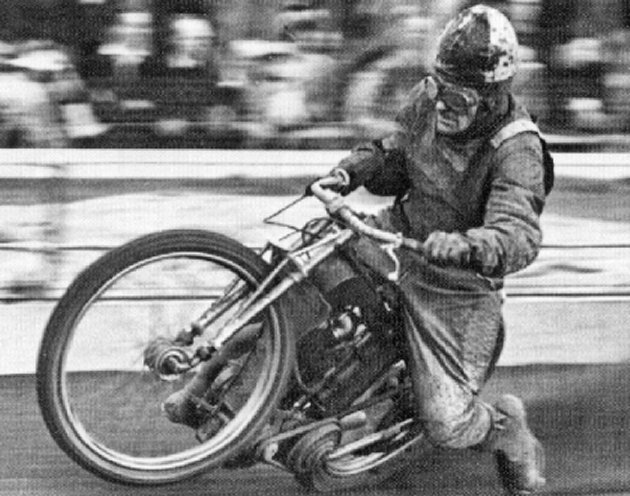 |
| Courtesy of John Spoor |
| |
|
Me: What other first Division teams can you
remember? |
| UA: Well, our local derby was with West
Ham, which always brought out the crowds. Of course they had the
guv’nor of them all, Bluey Wilkinson. I think he was the best
rider I ever saw. Bluey means Ginger of course. But they also had
some other great riders, Arthur Atkinson, Tommy Croombs and Jimmy
Gibb. They were a lovely team. They also had Malcolm Craven, who
seemed to get better and better and went on to captain England. |
| |
|
Me: What else can you remember about your
visits to Hackney Wick? |
| UA: They used to put on some great
interval entertainment. I can remember a boxing match there once
between Jimmy Bitmead and Max Joachim. It was only one round of
three minutes but it was a cracking fight. |
| |
|
Me: Thank you. |
| |
| |
|
| |
| Stan Stevens |
| |
| By Norman Jacobs |
| |
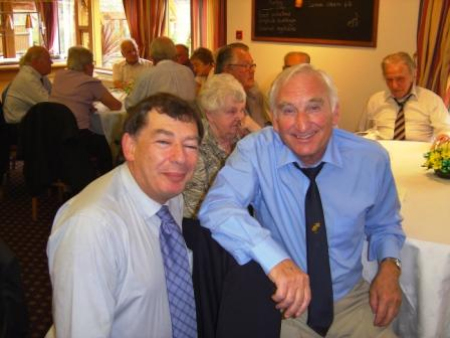 |
| |
|
Norman says: One of my favourite riders of
all time is Stan Stevens. Never a star (except on that
never-to-be-forgotten night when he beat Barry Briggs at West
Ham!), but always a whole-hearted trier who gave his absolute best
every time and whose points were often the difference between
winning and losing for whatever team he was riding for at the
time. At West Ham he struck up a brilliant relationship with
skipper, Ken McKinlay, and their partnership would often result in
5-1s over the visiting team.
Some years ago, I interviewed Stan about his
life in speedway.
|
| |
Me: When did you first get interested in
speedway?
Stan: I went along to West Ham’s last meeting
of the 1946 season when I was about 12. It was absolutely packed.
I couldn’t get a programme, they’d sold out. But I was bitten by
the bug. I then went into cycle speedway and got quite good at
that, riding for England with Dave Hemus and Clive Hitch.
|
| |
Me: When did you progress to the real thing?
Stan: I started at California. I can’t
remember which year, but it must have been mid to late 1950s. Alan
Smith was a great help to me. He gave me good advice on which bike
to buy and how to look after it.
|
| |
|
Me: I believe you moved on to Rye House.
Stan: Yes, I went there in 1958, this was
just after Dickie Case sold it to the dog man [Les Lawrence], who
was only interested in running greyhound racing and scrapped the
speedway altogether. But Mike Broadbank came to an arrangement
with him to build a new track on what is now the go-kart track.
When the dog man saw the size of the crowds he agreed to move the
speedway track back to its original location. I also rode in a few
second half events when New Cross was revived by Johnnie Hoskins
in 1959.
|
| |
Me: Can you remember anything about New
Cross?
Stan: I can remember one meeting in 1961, it
was a World Championship qualifying round. I went into the pits
and saw Split Waterman in there cutting stripes in his tyres with
a knife. I said to him, “Why are you doing that? Does it help?” He
let out his famous laugh – you could always tell when Split was
racing as you could always hear this laugh in the pits -
and replied, “No, it
doesn’t do a blind bit of good, but it makes me feel better!” When
we met during the meeting itself, I outgated Split, but he flew
past me down the back straight. As he did so, he turned to me and
gave me a big grin. Of course, we didn’t wear masks in those days.
|
| |
Me: You actually rode for New Cross in 1963
didn’t you?
Stan: Yes, Wally Mawdsley and Pete Lansdale
took over New Cross in 1963 and entered them in the Provincial
League and they signed me up. Of course, as we know, they packed
up mid season. I won the very last race ever held there – the
Scratch Race Final. The crowds were very thin, so it wasn’t a
surprise when they announced its closure.
|
| |
Me: You went on to ride for West Ham when
they returned to league racing in 1964. How did that come about?
Stan: Well, West Ham closed in 1955 because
Jack Young decided not to return from Australia. The crowds were
dropping and they felt they couldn’t continue without their star
rider. It wasn’t just West Ham, crowds were falling everywhere,
even at Wembley. There was no atmosphere any more and you could
hear the echo of the bikes all round the empty stands. In 1964,
Sanderson still held the West Ham licence. He and Charles
Ochiltree now owned and promoted Leicester and Coventry and they
decided to revive West Ham. They signed up Bjorn Knutson and Reg
Luckhurst from Southampton as well as Norman Hunter and Malcolm
Simmons from Hackney. I found out that West Ham was opening from
the Oxford promoter, because Ronnie Genz was asked to guest for
West Ham in their first match, a challenge match away at Norwich.
I contacted the West Ham management and asked if there was
a place for me. Luckily there was.
|
| |
Me: You developed a good relationship with
Ken McKInlay while you were at West Ham didn’t you?
Stan: Oh yes. Ken was a great team rider. He
always looked round for me on the first bend and then get behind
me to keep the others out. I’d say he was one of the best team
riders of all time. Others in that category were Ronnie Moore,
Eric Chitty, Aub Lawson and Norman Parker. Ronnie was probably the
best of the lot. He was a master team rider, his throttle control
was something amazing. Other top riders like, Vic Duggan, Jack
Young and Tommy Price were not team riders at all, they just
wanted to win at all costs.
|
| |
Me: You stayed on and off until West Ham
finally closed didn’t you?
Stan: Yes, I had a few good seasons there but
the crowds dropped again and at the end of the 1971 season, West
Ham again announced its closure, but there was a short reprieve.
Romford was also forced to close at the end of 1971 because of
problems caused to local residents by the noise, so they moved to
West Ham for 1972 under the name West Ham Bombers. By that time
though the stadium had already been sold to housing developers. It
was agreed they could continue with speedway for one more season,
but that only lasted for six weeks until, in May, they were told
they had to leave. As it happened, no development took place till
October, so they could have stayed and got through the season. The
team moved off to Barrow.
|
| |
Me: You mentioned just now that West Ham
closed in 1955 because Jack Young didn’t come back. Why was that?
Stan: Youngie retired because he said he
wanted to see his family grow up and decided to stay in Australia.
As you know at that time, he was one of the top riders around, if
not the top rider, so
West Ham felt there was no chance of getting a suitable
replacement. With crowds already falling, they felt that crowds
would drop even further if they couldn’t track a star name of his
ability so they closed down. The funny thing about Young was that
although he was arguably the best rider in the world in the early
1950s, he couldn’t gate for toffees. He was often last out the
traps but by the time he entered the back straight he would be in
the lead, he used to pass the other three riders round the first
and second bends. He once said to Tommy Price, “I wish I could
trap.” To which Price replied, “Well thank Christ you can’t, or we
might as well all pack up!”
|
| |
Me: What is your most outstanding memory of
your time in speedway?
Stan: Funnily enough, it is a race I lost! It
was away against Edinburgh in the Provincial League in 1961. I
rode for Rayleigh. We were one of the favourites for the title
that year as we had a strong heat leader trio of Reg Reeves, Harry
Edwards and me, so we were expected to beat Edinburgh. But with
one heat to go, the scores were level and I was out in the last
heat with the unbeaten Reg Reeves, against George Hunter and Doug
Templeton. George very soon got the better of Reg, but we were
both comfortably ahead of Doug and it looked for all the world as
though it would be a 3-3 and a draw. But I can still vividly
recall what happened then. As I rode into the fourth bend on the
last lap, I could see the whole crowd in the main stand rise to
their feet as one and it was then that I realised that Doug had
got me. He had made an amazing manoeuvre to cut through on the
inside of me. Although I came last and in effect lost the match
for my team, I will never forget the sight of that crowd rising as
one to cheer their own rider home.
|
Me: Thank you, Stan. |
| |
|
| |
| |
| Mike Broadbank |
| |
|
By Norman Jacobs
|
| |
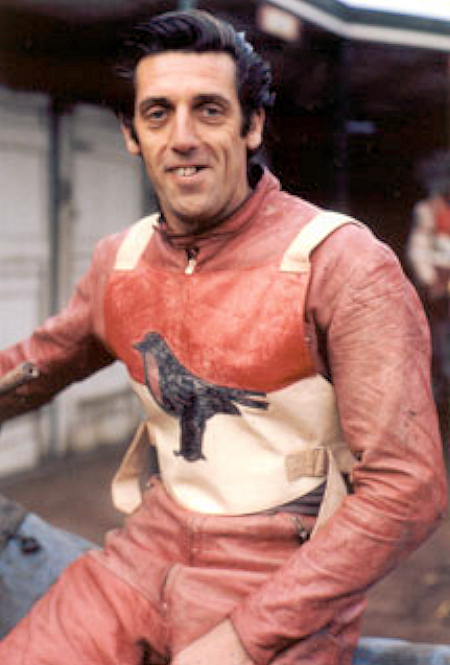 |
| Courtesy of J Spoor |
| |
|
Interview with Mike Broadbank Part One |
| |
|
Some years ago, when I was writing my History
of Rye House, I went to see Mike Broadbank to ask him about his
time at Rye House in the 1950s and 60s. He and his wife made me
very welcome and supplied me with refreshments throughout the day.
|
|
This first part is what Mike told me about
the 1950s…: |
| |
|
“I got into speedway through cycle speedway
after watching the real thing at Rye House as a nine year old. I
rode for Hoddesdon Kangaroos. I continued going to watch speedway
and, as I got older, I got to know all the riders and began
helping out in the pits, helping to push them off and other odd
jobs. |
| |
|
When I left school in 1949, Dick Case, the
promoter at the time, asked me if I would like a job at the track,
so I started work there for £3 10s a week. I helped him prepare
the track for the daily training sessions. These sessions lasted
from 9:00 a.m. to 7:30 p.m. It was a long day! |
| |
|
Tuesday and Thursday were practice days for
novices. We had about 30 every day. On the other days, bigger
clubs such as Wembley, Harringay, Rayleigh and Walthamstow hired
the track for their own youngsters. There was always a morning
session followed by a pub lunch and then back in the afternoon. |
| |
|
I got to know the Harringay riders well, in
particular Steve Ison as I used to clean his bike and leathers. I
got 2s 6d and an ice cream for this. The great Vic Duggan would
come down sometimes and show everyone how to broadside properly. |
| |
| Sunday was of course the big day when we had
challenge matches or individual trophy meetings. All the London
supporters used to come down. The trains were packed with fans
wearing their Wembley, Harringay, West Ham, Wimbledon and New
Cross colours. Some used to cycle up from London. There used to be
a fair on, there would be boats sailing up and down the river and
peacocks walking around the pub gardens. It was a very colourful
scene. |
| |
|
My riding career started out on the novice
days. I bought a bike from Jack Cooley, the old New Cross rider
who had actually appeared in the “Once a Jolly Swagman” film.
|
| |
|
After a few outings I was deemed good enough
to appear as second reserve in one of our Sunday matches. First
reserve that day was a young man called Len Silver. Unfortunately,
I only rode for about a year before I was called up for National
Service. When I came out from the army I was very fit and
determined to make up for lost time in my speedway career. Dick
Case told me that Vic Ridgeon was the man to beat at Rye House.
Vic was the acknowledged master of the track at that time, so I
studied his style to see if he had any weaknesses and how I could
exploit them. The former World Champion and Wembley star, Tommy
Price, saw me have a go and reported back to their manager, Alec
Jackson, that he should sign me up. He said, “He may only be a
young whippersnapper but I think he can beat me round Rye House!” |
| |
|
Not long after my return, Dick Case went back
to his home in Australia and Rye House was bought by Mr Les
Lawrence, who owned a chromium factory in Hoddesdon. Les was
really only interested in the greyhound racing that was held at
the stadium and appointed Jack Carter, another dog man, as his
foreman. Les closed the speedway and converted the whole area into
a bigger greyhound track and building over the speedway track.
|
| |
|
By this time I had become very well known to
the Rye House supporters as I had now been there for many years
since leaving school and they asked me to speak to Mr Lawrence as
their spokesman, with a view to returning speedway to the stadium.
I approached Jack Carter, who arranged for me to meet Les
Lawrence. |
| |
|
I told Mr Lawrence that I would build a new
track within the grounds and be responsible for it if he’d give me
the chance. He said that a lot of people had complained to him
about the closure of the speedway, so he was prepared to let me
have a go. He gave me a bit of land, well more like a swamp
really, behind the greyhound track and said I could use that. He
gave me the land for no charge but no money to develop it.
|
| |
|
I went to the field and placed a post in the
centre and worked out how big the track would be. I went round and
round the track on a Massey Ferguson tractor with a blade on to
mark out the track. Then I got tons of cinder from a nearby power
station. We tipped it into two large tips and laid the cinder by
hand and also hand raked it all. We made the pit area out of
rubble and the start box out of wood and tin. We erected a safety
fence, made from 4x2s and placed rails round the top. We then cut
some four feet high pieces of corrugated iron to strengthen the
fence. We managed to get an old starting gate from the now defunct
Harringay and put new magnets in. |
| |
|
There was a lot of work involved in making
this new track from nothing and fortunately a lot of riders came
down to help, such as Jimmy Gooch, who did some raking for us, and
Colin Pratt. Eventually we were ready to go. The track measured
325 yards. From where we started I thought we’d done a good job. |
| |
|
However, it wasn’t the ideal location for a
speedway track. A swamp is not a good base! Les Lawrence came to
watch speedway there a few times and congratulated me on doing a
good job. He was also impressed by the attendance figures for
speedway matches, so he asked me if we’d like to move back to the
original track. I jumped at the chance of course. So, he sold my
track to a Go-Kart organiser and we built a new speedway track
back on its old site, though we had to build it inside the
greyhound track instead of the outside, where it had originally
been, as that had now been built over with stands and a club room. |
| |
|
Once again many riders came down to help out,
in particular Pratty, Stan Pepper and Pete Sampson. Also my
father, Pop, put in a lot of work. The only part of the track in
the swamp we salvaged was the starting gate, though we bought
another one as well as a back-up. We had to buy up a whole new
load of cinders for example. |
| |
|
Because the new track was inside the
greyhound track it was a bit shorter and narrower. We installed
hot showers in the dressing room for the first time ever. We used
to have to wash in a bucket of cold water. We also bought a
caravan to use as our office. |
| |
|
That first meeting back at the old track saw
an attendance of 15,000. |
| |
|
Coming next: The 1960s. |
| |
|
Mike Broadbank Part 2 Rye House in the 1960s |
| |
|
We ran the first part of the 1960 season on the old track while
the new one was still being completed, but once we moved to the
new old track as it were, there were a number of changes to the
team itself. I became the new promoter while Freddie Millward
became the new manager. We also decided to change the name of the
team from the Roosters to the Red Devils. At the time I was known
as the Red Devil, because, unlike most riders at the time who only
ever wore black leathers, I wore red ones. I had decided to do
this a few years earlier really as a bit of showmanship to get
myself known as I was always easily identifiable. So we thought
the Red Devils would be a good name for the team. |
| |
|
Of course, 1960 was the year the Provincial League started, so the
number of teams available for riders to ride in full time went up
from nine in the old National League to 20. This made it more
difficult for us to find riders willing to ride for us in
challenge matches as we no longer had exclusive call on those
riders. Although they had now found places with other teams, some
did continue to turn out for us on a regular basis. Riders like
Tommy Sweetman, Clive Hitch, Stan Stevens and Pete Sampson, while
others, like Colin Pratt, Geoff Mudge, Jim Gleed, Bill Wainwright
and Sandy McGillivray came and went during the season. |
| |
| Rye House 1961 |
| |
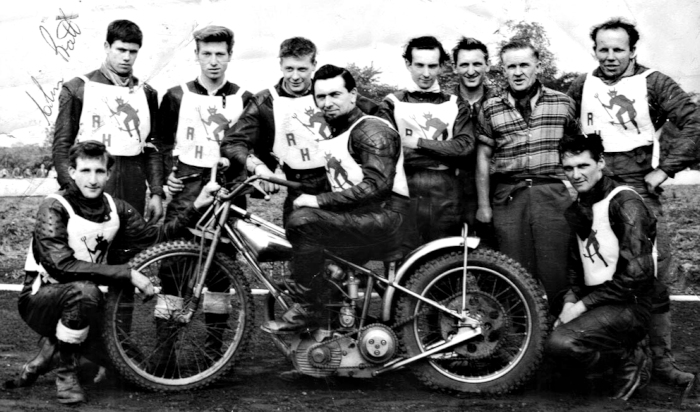 |
| Courtesy of Norman Jacobs |
| |
| The Red Devils in 1961. l-r, back row:
Colin Pratt, Pete Sampson, Bill Wainwright, Ronnie Rolfe, Stan
Stevens, Freddie Millward (Manager), Jim Gleed. Front row: Clive
Hitch, Tommy Sweetman (Captain, on bike), Sandy McGillivray. |
| |
|
In 1962, the stadium was bought by Gerry Bailey and Jack Carter,
to whom we now had to pay rent for hiring the stadium every Sunday
and for the training sessions. I continued in the role of
instructor at the training school, which of course we were still
running. But in the winter I went off to Australia and my dad,
Alf, or Pop as we all knew him, took over the school with the help
of one of my former discoveries and now a teammate of mine at
Swindon, Brian Brett. |
| |
|
A big change came to the sport in 1964, one that was to give us at
Rye House a big headache. It was the year the Provincial League
was outlawed by the Speedway Control Board, so that anyone who
rode for a Provincial League team was not allowed to ride in
official events like the World Championship for example. At the
time there were four other tracks like ours, just running open
meetings who didn’t belong to any league, the others being
Eastbourne, Ipswich, Rayleigh and Weymouth. They decided to set up
a small league of their own called the Metropolitan League and
operate within the orbit of the Provincial League. We had to do a
lot of soul searching about what would be best for Rye House, but
in the end we decided to throw in our lot with the National League
set up and so remain lawful.
The reason for this was because we felt it
would be unfair to the youngsters we were training if they were to
start their career by being “outlawed”. |
| |
|
It was at the end of that season that I decided to end my long
association with Rye House. Although we were still getting good
crowds at the Sunday meetings, we didn’t seem to be making any
money. I always made sure that I paid all the riders and staff, of
which there were about 50, before the end of the afternoon. Out of
the rest I paid the rent to Carter and Bailey. This should have
left me with some money left over for myself, but invariably there
was nothing. I could never understand this. We had good gates, but
always there seemed to be about £200-£400 missing. I could never
be sure who it was, but I was fairly certain someone was nicking
the money. So I decided it was time to get out. |
| |
|
I didn’t really want to leave but there was definitely something
very underhand going on and I was very hurt about the whole
affair. So I decided there was no future there for me; people were
ripping me off. Rye House was my life. I had spent all my spare
time there from my very young days when I was known as “the boy
with the red flag” through training and riding there, building two
tracks and then working on them, raking them, maintaining the
white line and so on. I put hours and hours in to it, both the
Sunday meetings and the training school.
|
| |
|
I am very proud of the number of trainees who passed through my
hands who went on to become top riders, names like Norman Hunter,
Colin Pratt, Roy Trigg, Stan Stevens, Alan Cowland, Brian Leonard,
James Bond, Mike Keen, Bob Thomas and Dave Hemus. I also gave
riders from overseas their first taste of English speedway by
allowing them to train at Rye House. Sandor Levai was one who
spent many hours at Rye House when he first came over from Hungary
and you could guarantee that most Australians who came over would
make for Rye House first. The one thing I am glad of now is that
Rye House is still open for speedway and very pleased that Len
[Silver] is the promoter. He is a great showman and the best thing
that could have happened for the club and the track. |
| |
| |
| |
|
The contents of the site are © and should not be
reproduced elsewhere for financial gain. The contributors to this site
gave the pictures and information on that understanding. If anyone has
any issue or objections to any items on the site please
e-mail
and I will amend or remove the item. Where possible credit
has been given to the owner of each item. |
|
|

